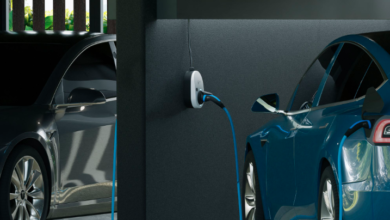Electric Vehicle Innovation: Shaping The Future Of Automotive Mobility

In the past decade, the automotive industry has undergone a transformation that is reshaping the way people think about transportation. At the heart of this transformation lies the electric vehicle, a revolutionary advancement that is setting the stage for a cleaner, smarter, and more sustainable future.
The rise of the electric vehicle is not merely a reaction to the environmental crisis but a calculated evolution of technology, policy, and consumer preference. In this article, we will explore the key aspects driving the growth of electric vehicles, from the technological foundation to the impact on economies and the environment.
Understanding The Electric Vehicle
Unlike fuel-powered cars, EVs rely on rechargeable battery packs to operate, which dramatically reduces reliance on fossil fuels.
There are three main types of electric vehicles:
- Battery Electric Vehicles (BEVs) – fully electric with no fuel engine.
- Plug-in Hybrid Electric Vehicles (PHEVs) – use both battery and fuel engine.
As the technology matures, BEVs are becoming the preferred option for sustainability-focused drivers and governments.
See also: Car Resprays and Body Repairs in Telford: Auto Perfection Services
Why The Electric Vehicle Is Gaining Popularity
- Cost Efficiency
Although the initial cost of EVs can be higher, the total cost of ownership is lower due to reduced fuel, tax, and maintenance expenses. - Government Incentives
Many countries offer subsidies, tax reductions, and perks such as free parking or access to bus lanes to promote electric vehicle adoption. - Improved Technology
Modern EVs now feature better battery performance, longer driving ranges, and faster charging infrastructure, addressing earlier limitations.
The Technological Evolution Behind Electric Vehicles
The foundation of every electric vehicle lies in its battery system and electric motor. Today’s EVs commonly use lithium-ion batteries, which offer high energy density, efficiency, and lifespan. Advancements are being made in solid-state batteries that promise even faster charging and improved safety.
Moreover, smart systems in EVs allow for real-time battery monitoring, over-the-air updates, autonomous driving support, and regenerative braking, which stores energy during deceleration.
Impact On The Automotive Industry
Traditional car manufacturers like Ford, Toyota, and GM are now pivoting toward full electrification by 2030 or earlier. Simultaneously, companies like Tesla, BYD, and NIO have emerged as frontrunners by focusing solely on EV production.
This industry-wide transition is encouraging innovation in:
- Supply chain localization
- Battery recycling and reuse
- Lightweight materials and aerodynamics
- Energy-efficient production processes
As demand grows, competition is driving down costs, making EVs accessible to broader demographics worldwide.
Challenges In Electric Vehicle Adoption
While the momentum is strong, the electric vehicle market still faces a number of challenges:
- Charging Infrastructure
A key concern for EV owners is the lack of public fast-charging stations, especially in rural and less-developed areas. - Battery Lifecycle & Recycling
Disposal and recycling of used EV batteries remain a pressing issue, though progress is being made in second-life applications and material recovery. - High Initial Costs
Despite decreasing battery prices, EVs can still be out of budget for many consumers. However, costs are expected to continue declining with economies of scale. - Grid Demand
A sudden rise in EV adoption could strain electricity grids if renewable sources and smart grids are not adequately developed.
Addressing these issues requires collaboration between automakers, governments, utility companies, and technology innovators.
Role Of Government And Policy
Government involvement has played a crucial role in the acceleration of electric vehicle integration. Countries like Norway, the Netherlands, and the UK have set definitive deadlines to ban the sale of new ICE vehicles. Meanwhile, cities such as Shanghai, New York, and London are investing heavily in electrified public transport fleets.
Incentives include:
- Direct purchase subsidies
- Income tax reductions
- Exemptions from registration fees or road taxes
- Grants for EV infrastructure setup
These policies send strong signals to both investors and consumers about the future direction of mobility.
The Future Of Electric Vehicle Innovation
Here are some trends shaping the future:
- Wireless Charging: Eliminating cables through inductive charging embedded in roads.
The convergence of automation, connectivity, and electrification will make the electric vehicle an indispensable element of future urban ecosystems.
Final Thoughts
The electric vehicle revolution is not just about replacing fuel tanks with batteries—it’s about reimagining how we move, interact, and live. It represents a significant leap toward a cleaner and more sustainable world, with far-reaching benefits that extend beyond just transportation.
As infrastructure improves, costs decrease, and awareness grows, electric vehicles are poised to become the dominant force in global mobility. For businesses, policymakers, and everyday consumers, the time to embrace the electric vehicle era is now.


